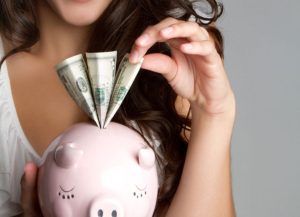It’s no surprise that most women enjoy shopping, but it may come as a surprise to learn that most women engage in and can’t curb emotional shopping as well. Are you depressed about your job? Did you and the boyfriend just break up? Sometimes the fix for these items (and more) seems to be shopping. The CGS Team recently came across an article from Money Talk News where a lady asked “How can I curb emotional spending?” We were so impressed by the answers that we had to share!
Here was the question asked to Stacy Johnson of Money Talk News:
“How can I curb emotional shopping? When I’m in a bad mood, one of my go-to things to feel better is to buy something online. It’s always small stuff, but crap I don’t need really hurts the wallet. Any tips?” — Whitney
Here was the answer:
“I sat down with a psychiatrist a few years ago to discuss this issue.
The upshot? It’s one thing to surrender to the occasional impulse buy — that watch gleaming from behind the display case, or a pair of black shoes that will add the perfect dash of sophistication to your favorite business suit. But when your purchases shift from impulsive to compulsive, you might be a shopping addict.
Researchers estimate that up to 6 percent of Americans are so-called shopaholics. In our society, the phrase “shop till you drop” translates as frivolous and fun, but when spending becomes a problem, the glamour fades.
Psychologists call it compulsive buying disorder, which is characterized as an impulse-control issue, just like gambling or binge eating, and has the potential to create emotional and financial distress.
Here are seven signs of a potential problem. For a more complete analysis, check out the Compulsive Buying Scale, developed by psychologist Gilles Valence and his associates.
You have many unopened or tagged items in your closet. This isn’t the sweater your aunt gave you last Christmas; it’s about items you bought. Maybe you forgot about some of this stuff — boxes of shoes lining the bottom of your closet or jackets that have never seen the light of day.
You often purchase things you don’t need or didn’t plan to buy. You’re easily tempted by items you can do without. A fifth candle for your bedroom dresser, a new iPod case, even though yours is fine … you get the idea.
An argument or frustration sparks an urge to shop. Compulsive shopping is an attempt to fill an emotional void. Do you find yourself shopping to deal with a feeling of anxiety?
You experience a rush of excitement when you buy. Shopaholics experience a “high” or a rush, not from owning something, but from the act of purchasing it. Experts say dopamine, a brain chemical associated with pleasure, is often released in waves as shoppers see a desirable item and consider buying it. This burst of excitement can become addictive
Purchases are followed by feelings of remorse. This guilt doesn’t have to be limited to big purchases. Compulsive shoppers are just as often attracted to deals and bargain hunting.
You try to conceal your shopping habits. If you’re hiding shopping bags in your daughter’s closet or constantly looking over your shoulder for passing co-workers as you shop online, this is a possible sign you’re spending money at the expense of your loved ones or even your job.
You feel anxious on the days you don’t shop. Shopaholics have reported feeling out of sorts if they haven’t had their shopping fix, and have even admitted to shopping online if they can’t physically pull away from their day’s responsibilities.
If the characteristics above sound a lot like you or someone you know, here are some ways to help kick a shopping habit:
Find a new activity
Jogging, exercising, listening to music, watching TV – any activity could potentially substitute for shopping and would be a much lighter burden on your wallet.
Identify triggers
Take note of what’s likely to send you off to the nearest department store, whether it’s an argument with your significant other or frustration after a business meeting. When these feelings overcome you, resist shopping at all costs and find a healthier way to work it out.
Remove temptation
It’s no secret that you shouldn’t walk through your favorite boutique if you’re trying to curb your spending. Try to limit your shopping trips and go only when absolutely necessary. If online shopping is your weakness, resist the urge to surf your favorite stores’ sites and even consider keeping your laptop out of reach, especially when you’re feeling vulnerable.
Leave home without it
Leave your debit and credit cards at home. Create a shopping list with estimated costs, and stick to it when you’re at the store.
Get help
If you’re still struggling with compulsive spending, don’t be afraid to ask for help. You can start with self-help books or by asking a friend or family member to help keep you in check, but it might also be wise to enlist professional help. Consider therapy, resources like Stopping Overshopping or support groups such as Debtors Anonymous.”
As seen on: Ask Stacy: How Can I Curb Emotional Shopping by Money Talk News
After reading this article, do you think you have a shopping problem? Do you tend to shop when you are extremely happy or sad? What do you think can help people control their emotional spending? We would love to hear your thoughts on the article and how you deal with emotional spending! Share with the community by leaving a comment below!






1 thought on “How Can I Curb Emotional Shopping?”
Great article! I used to shop when I was happy, sad, or just bored. I wish I knew this information back then!